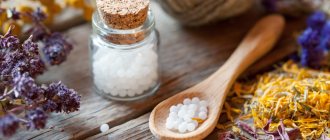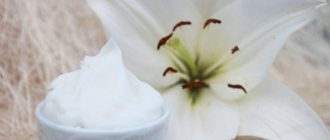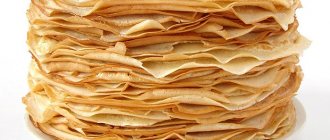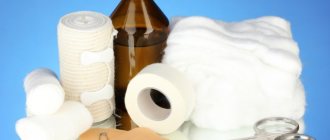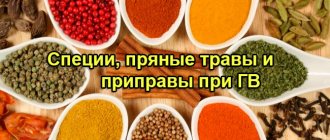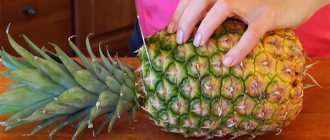I remembered an old joke... “The daughter comes up to her mother and asks: “Mom, why does a woman need breasts?” “For beauty,” the mother answers. - No, mommy, how come you don’t know? Breasts are needed to feed a baby! “You don’t know that... You will feed your child several times throughout your life, but the rest of the time you need your breasts just for beauty.”
Yes, since ancient times, women's breasts have been an object of worship and admiration for men and a source of pride for women. However, its natural purpose is to feed the newborn with milk. And how many problems can come from using breasts “for their intended purpose”!
The main cause of postpartum depression is breast problems: lactostasis, mastitis, cracked nipples. These conditions force one to give up breastfeeding, depriving the baby of a valuable natural gift - breast milk. To prevent this from happening, I suggest you figure out how to behave when milk stagnation occurs.
For some reason, the question “How to reduce the temperature during lactostasis?” is one of the most common on women's forums about breastfeeding. I don’t argue that when the temperature rises, the state of health worsens, which complicates the full care of the child.
However, fever with lactostasis is one of the manifestations of the disease, its symptom. Therefore, by lowering the temperature during lactostasis, we influence the effect, but not the cause of the disease.
The cause of lactostasis is the accumulation of milk in the mammary gland (most often in one of its lobules). The disease is manifested by a feeling of bloating in the chest, pain when touched and feeding, as well as a rise in temperature due to a systemic inflammatory reaction. During a manual examination of the breast, a woman discovers an enlarged painful lobule - a zone of lactostasis.
The main danger of lactostasis lies in the fact that breast milk is a good environment for bacteria . With active emptying of the mammary gland, bacteria do not have time to settle and multiply in the milk ducts, but if the flow of milk slows down or stops, bacterial infection is almost inevitable - mastitis occurs.
Why is the temperature rising?
The temperature of a nursing woman can increase not only with lactostasis. If the thermometer fluctuates, this means that an infection has entered the body or an inflammatory process is developing. When the thermometer shows less than 38, taking any medications is not recommended. You need to bring down the temperature if it is above 38.
But first it is necessary to accurately establish the cause, because it can be not only lactostasis, but also other disorders:
- initial stage of mastitis;
- disruption of the gastrointestinal tract as a result of food poisoning;
- exacerbation of chronic pathologies;
- viral diseases.
Mastitis is a dangerous condition that can cause serious consequences. The disease is accompanied by stagnation of milk in the mammary gland, pain, inflammation, and swelling of the tissues. If the high temperature lasts for a long time, there is every reason to suspect that it is already mastitis. Only a qualified doctor can help a woman. You cannot self-medicate, and you should not delay either, since pus forms in the tissues of the mammary glands, and this can lead to severe suppuration not only of the breast, but also of nearby organs.
What to do with lactostasis
Unfortunately, it is impossible to “fight” pathogens with antibacterial medications during breastfeeding. Medicines have contraindications for this. The use of drugs can provoke problems in the baby’s body, from severe allergies to signs of intoxication.
It is possible to reduce the temperature of a nursing mother with lactostasis with tablets or suppositories that contain paracetamol. It is suitable because the active component does not enter the milk. It is also possible to use aspirin for children. It is advisable to lower the temperature when readings are thirty-eight degrees or more. If you have a low-grade fever, this is not necessary, because at this time interferon is released, which is needed to fight the virus.
In order to relieve spasms of the breast ducts, you need to use antispasmodic medications like Nosh-pa. This will increase milk flow. In the form of this remedy, which also has an analgesic effect, it is worth using “Baralgin”. Just one such tablet will not harm the baby, but will help to drain the mammary gland and prevent the formation of mastitis.
It is recommended to apply ice to the problem area of the chest after using the antispasmodic. If you have special gel sachets at home, you should use them. Sometimes frozen food from the freezer helps. All this should be applied through cotton fabric. The effect of ice should occur within fifteen minutes, and then it is advisable to take a break and apply ice again. This will help the ducts to shrink and milk will not flow to the problem area of the breast. In addition, ice will numb the area of inflammation.
go to top
Treatment of lactostasis in the case of fever
Treatment of the disease should begin after its first signs have been detected. The main problem that arises in this situation is that a breastfeeding woman should not take antibacterial drugs.
You can alleviate the patient’s condition, lower the temperature, and alleviate the symptoms of lactostasis in the following ways:
- taking medications approved for nursing mothers;
- applying compresses to the chest;
- use of ointments;
- folk remedies.
This condition cannot be ignored, as complications may arise. Timely treatment will help get rid of unpleasant symptoms and continue to feed the child normally.
Medicines
Traditional medications that are designed to reduce fever will not be suitable in this case. It is best to take tablets or suppositories, the main active ingredient of which is paracetamol. Such medications are good because the active substance is retained in the mother’s body without passing on to the child. If you take other medications, they can cause not only allergies, but even serious poisoning in your baby.
Nursing mothers can take medications based on baby aspirin. For lactostasis, you can take other tablets.
- “No-spa” has an antispasmodic effect, helping to improve milk flow.
- “Baralgin” not only relieves spasms, but also relieves pain, normalizes the patient’s condition, and improves her well-being.
The drug "Baralgin" is taken to prevent mastitis. For lactostasis, just one tablet is enough. It will not be able to harm the baby, but it will cope well with congestion in the breast tissue. It is advisable to apply something cold to the hardened area after taking the tablet. This could be a packet of special gel, frozen food, or regular ice. The cold will stop the flow of milk to the painful area and at the same time relieve the pain.
Compresses
You can reduce the temperature and relieve pain due to lactostasis by using a variety of compresses. The simplest and most accessible is applying a cabbage leaf to the sore spot. First, you need to beat the leaf so that the juice comes out, then apply it to the sore spot, cover with a cotton cloth, and put on a bra. This compress can be left overnight. It will help not only reduce the temperature, but also relieve swelling, pain, and spasms.
- Magnesia. Compresses based on this substance relieve tissue swelling and prevent the formation of pus inside. Regular gauze should simply be moistened in a magnesium solution and applied to the breast after feeding.
- Honey. To make a compress, mix honey with rye flour in a 1:1 ratio, form a cake and apply to your chest. This remedy relieves swelling and inflammation.
- If you decide to use this particular product, be careful, as it has an unpleasant, pungent odor. After such a compress, the baby may not latch on to the breast.
Compresses that are used for lactostasis help get rid of pain, reduce temperature, and relieve swelling. They are safe and effective, have no contraindications and do not cause side effects.
Ointments
At the pharmacy you can buy ointments that are used to treat lactostasis and eliminate the symptoms of the disease. Before purchasing any product, you should consult your doctor. The ointment should not contain toxic components or have a strong odor so that the baby does not refuse to breastfeed.
- Traumeel. Absolutely safe ointment based on homeopathic components. It has no smell. After each feeding, the sore mammary gland should be lubricated, and before feeding the baby, the breast should be washed with warm water and soap.
- Progestogel is the most popular ointment that doctors recommend using to treat lactostasis. It contains useful components that relieve swelling, eliminate inflammation, and as a result, lower body temperature.
Often women use Vishnevsky ointment, believing that it will help relieve pain and inflammation. In fact, doctors do not recommend its use, since the active substances promote blood flow to the mammary gland, and this can trigger the development of mastitis.
Principles of treatment
The best doctor for lactostasis is the child himself.
If the mother puts the baby to the breast more often (including at night), then perhaps no treatment will be required at all.
But if feeding causes severe pain in a woman, then the pain must first be relieved.
This can be done in the following ways:
- before feeding, stand under a warm shower, directing a stream of warm water to the chest;
- Gently massage stagnant areas;
- Express a little milk - only until the pain is relieved.
After hand expressing, it is very important to immediately put the baby to the breast so that he completely empties the mammary gland.
You can relieve pain with compresses:
- cold cabbage leaf, beaten until juice appears;
- honey compress - you need to mix honey and flour, form a dense cake from this mass, and apply it to stagnant places;
- applying cold low-fat curd mass to the chest.
Any compress for lactostasis is kept for about 20 minutes.
As for medications, various ointments cope well with lactostasis:
- Arnica;
- Traumeel S;
- Malavit, etc.
If necessary, the doctor may prescribe No-shpa or some other antispasmodic for a course of up to 5 days.
These drugs will help dilate the milk ducts.
If lumps appear in the inner upper quadrants, it is recommended to feed from the armpit - the baby’s legs remain behind the mother’s back, and the head is placed under the arm to the breast. If there are seals in the anterior lobes, the baby is fed from above, bending over him.
Is it possible to feed the baby?
The main question that worries nursing women who are faced with the problem of lactostasis and elevated temperature is whether it is possible to continue breastfeeding. The main advantage of breastfeeding is that only a hungry baby can effectively resolve congestion in the chest. But the baby should be applied first to the sick breast, and then to the healthy mammary gland.
With a very high temperature and rapid development of the inflammatory and infectious process, doctors may recommend taking antibiotics. In this case, an hour before feeding, the diseased mammary gland needs to be expressed. If the situation is advanced, the doctor may prescribe medications that may adversely affect the child’s condition, so breastfeeding should be abandoned. The child can be switched to formula.
Elevated body temperature with lactostasis is a signal that you need to consult a specialist. The disease cannot be neglected, as this threatens the development of mastitis. Treatment must be timely and correct, then the symptoms can be dealt with quickly and effectively.
Other ways to reduce fever
When medications do not help, you should constantly wipe with water and vinegar. You need to wipe your forehead, in the area of your elbows, knees, and also in your armpits. It is better to make a compress on the forehead: soak a cotton cloth or rolled gauze in water as it warms up.
A special step in healing and lowering the temperature is the use of local compresses on the affected chest. Cabbage leaves work great, but you should first leave them in such a way that the inner side releases the juice. The leaf is applied to the chest, and a spacious cotton bra is put on top. The manipulation should be carried out at night and removed in the morning. If the fever does not subside, then you need to call a doctor for help.
go to top
Prevention
In order not to treat lactostasis, preventive measures should be taken. The main action is to properly attach the baby to the breast. It should completely capture the nipple and suck out milk evenly on both sides. Even if the baby cannot cope with the amount of milk that the woman’s body produces, a breast pump should be used.
- Impaired microcirculation is the direct cause of congestion in the breast tissue. And this leads to wearing tight bras. Even from the time when breasts begin to enlarge during pregnancy, you should monitor their size and choose the right underwear.
- Cosmetics and pharmacy products will help prevent breast problems. You can use special creams and gels. They make the breast skin more elastic and soft, and prevent the formation of cracks.
- It is also necessary to monitor nutrition, provide the body with useful substances, vitamins and microelements so that the immune system is in good condition.
A high temperature in a woman who is breastfeeding can be dangerous for the baby. And not so much the temperature itself as the drugs used to reduce it. Any decision regarding the treatment of lactostasis must be agreed with the attending physician. When taking any measures on your own, keep in mind that you can harm not only your health, but also the health of your baby.
Basic therapeutic techniques
The development of events can follow several scenarios. The first one is the most optimistic. We are talking about regular visits to the doctor during pregnancy, not to mention the breastfeeding stage. By constantly monitoring the mother's health, it will not be difficult for a specialist to suspect lactostasis at an early stage. In this case, effective therapeutic measures are taken.
Depending on the presence of medical contraindications, the doctor will prescribe medications to the patient that can restore the natural temperature background. In this case, the patient will receive the necessary instructions, their goal is to prevent the development of unpleasant conditions. If any appear, then the mother will be well aware of how to bring down the temperature without compromising her health and the feeding process.
The second scenario is based on the sudden appearance of stagnation of milk in the glands. In this case, there is no need to panic and run to the pharmacy to purchase the first antipyretic drug that catches your eye. Common sense and preliminary consultation with a doctor are the key to a quick recovery. In clinical practice, there are enough examples of how, if all the doctor’s advice was followed, the mother recovered completely within 2-4 days.
In order to help the doctor quickly make the correct diagnosis, it is recommended to try to find answers to the following questions:
- Are the rules for attaching the baby to the breast during feeding followed?
- Is it too often that a mother feeds her baby with only one breast? In this case, milk stagnation is due to uneven distribution of the load on the mammary glands.
- Are there any cases of non-compliance with the minimum and maximum required intervals between breastfeeding?
- Is a tight bra worn too often?
Based on the data collected as a result of the examination, as well as information obtained during an oral interview, the physician formulates a diagnosis.
Breastfeeding with lactostasis
Almost all women who encountered this problem wondered about continuing breastfeeding. Doctors came to the conclusion that it is not only possible, but also necessary to feed a child, because he himself can pump the breast perfectly. If there were already symptoms of mastitis and the doctor prescribed therapy with antibacterial medications, then you must either stop feeding or take the medicine after feeding. After two hours you need to express the milk and an hour later you need to feed the baby again.
If you have reserves of expressed milk, it is advisable to give it from a syringe or spoon.
When taking such drugs for a long time, it is better to switch to artificial feeding. At this time, it is important to pump all the time so that there is no stagnation and so that the disease does not turn into mastitis. Sometimes, to reduce the temperature, it is enough to express fluid from both breasts and that’s it.
go to top
Ointments for chest inflammation
In addition to cabbage leaves, it is possible to use ointments that reduce swelling of breast tissue and weaken the ducts in order to improve milk flow. They also relieve inflammation. It is necessary to choose a medicine that will be safe for the child. The ingredients should not be toxic, and the medicine should be odorless, because otherwise the baby may refuse to eat.
Traumeel is a non-hazardous ointment made from homeopathic ingredients. It does not have a strong aroma. This medicine is applied to the breasts as many times as the mother expresses. Before feeding, the ointment should be washed off with water.
Malavit is a rich ointment whose ingredients have antiseptic and anti-inflammatory effects. For lactostasis, you can apply compresses or apply the product to the skin of the breast after pumping and feeding. As a rule, it does not cause allergies and is well tolerated. But before feeding you need to wash it off.
Vishnevsky ointment. It is preferred for such a disease. But its use is not recommended due to the fact that the components contained in the medicine cause a rush of blood fluid, which can cause mastitis. The ointment also has a strong aroma.
go to top
